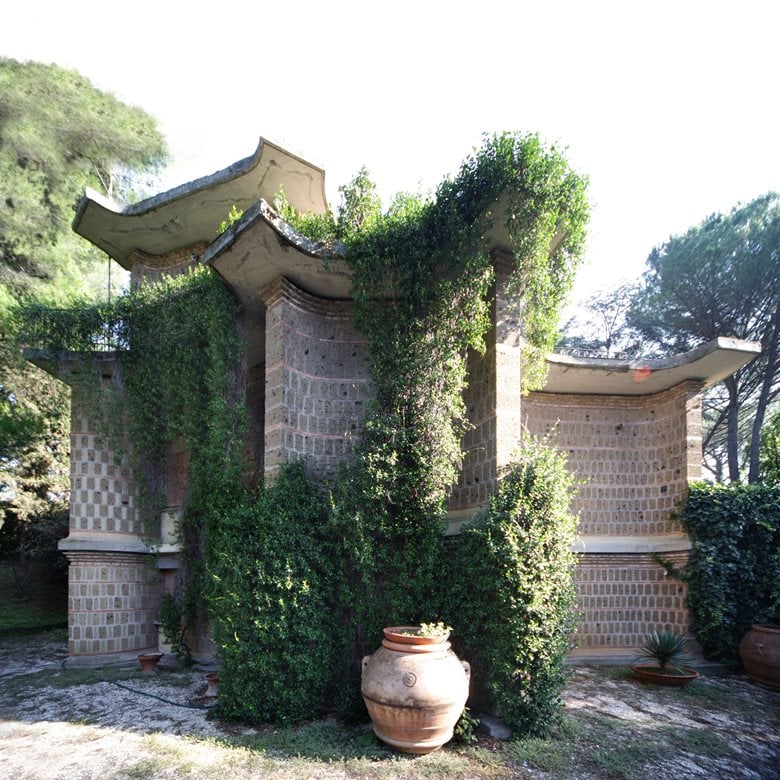Paolo Portoghesi
Architect Roma / Italy
 33
33
 19
19
Centro Culturale Intercomunale San Domenico
Canicattì / Italy / 2017
 2
2
Casa Baldi
Rome / Italy / 1961
 10
10
Belvedere Le Dalie
Rome / Italy
Graduating in 1957, he taught History of criticism (1962-66) at the University of Rome, from 1967 to 1977 he was prof. of history of architecture at the Polytechnic of Milan, of which he was dean from 1968 to 1976. Since 1995 he teaches design at the faculty of architecture of the Rome University. He directed the architecture sector of the Venice Biennale (1979-82), of which he was also president (1983-93). He also founded and directed magazines such as Controspazio, Eupalino and Materia. Appointed (2002) Knight of the Grand Cross of the Italian Republic. National member of the Lincei (2000), member of the Academy of Arts in Florence since 1977. Among the numerous awards received for the activity carried out, we mention the IN / Arch prize for historical criticism; the gold medal of the Manzù Foundation (1971); the Royal Palace of Caserta award (1973); the Fregene prize (1981); an honorary degree from the University of Lausanne (1984); the Legion of Honor (1985); the Capitol prize for culture (2005).
His remarkable activity as a historian and critic was joined by his activity in the field of design and his architectural works include: the Baldi house in Rome (1959), the Andreis house in Scandriglia (1963); Papanìce house in Rome (1967); Industrial technical institute in L'Aquila (1968); church of the Holy Family in Salerno (1968); Social center with civic library in Avezzano (1969); Mosque and Islamic Cultural Center in Rome (1976-91); seat of the Academy of Fine Arts in L'Aquila (1978); ENEL residential complex in Tarquinia (1981); thermal pavilion in Montecatini (1987); Catanzaro theater (1988); thermal buildings in Nocera Umbra (1989); Leon Battista Alberti square in Rimini (1990); towers of Pietralata for the SDO of Rome (1996); church of S. Maria della Pace in Terni (1997); Renaissance district in the Talenti Park in Rome (2001); the Shanghai tower project (2006); the project for the renovation of Piazza San Silvestro in Rome (2011). Exhibitions on his architectural works took place at the Milan Triennale, the Venice Biennale (1977), the Vienna Bauzentrum, the Hochschule für Bildende Kunste in Hamburg, and also in Berlin, Karlsruhe, Bielefeld, Gottingen, Osaka, Kassel, Paris , New York, San Francisco, Milan and along via Giulia in Rome.

Paolo Portoghesi (Rome, 1931), is an architect and historian of Italian architecture. Portoghesi's activity took place in parallel on the sides of historical research and architectural design, aiming at the reintegration of collective memory in the tradition of modern architecture. The Mosque and Islamic Cultural Center in Rome (1984-95) and the Renaissance district in the Talenti Park in Rome (2001) are among his most famous architectural works. Graduating in 1957, he taught History of criticism (1962-66) at the University of Rome, from 1967 to 1977 he was prof. of history of architecture at the Polytechnic of Milan, of which he was dean from 1968 to 1976. Since 1995 he teaches design at the faculty of architecture of the Rome University. He directed the architecture sector of the Venice Biennale (1979-82), of which he was also president (1983-93). He also founded and directed magazines such as Controspazio, Eupalino and Materia. Appointed (2002) Knight of the Grand Cross of the Italian Republic. National member of the Lincei (2000), member of the Academy of Arts in Florence since 1977. Among the numerous awards received for the activity carried out, we mention the IN / Arch prize for historical criticism; the gold medal of the Manzù Foundation (1971); the Royal Palace of Caserta award (1973); the Fregene prize (1981); an honorary degree from the University of Lausanne (1984); the Legion of Honor (1985); the Capitol prize for culture (2005). His remarkable activity as a historian and critic was joined by his activity in the field of design and his architectural works include: the Baldi house in Rome (1959), the Andreis house in Scandriglia (1963); Papanìce house in Rome (1967); Industrial technical institute in L'Aquila (1968); church of the Holy Family in Salerno (1968); Social center with civic library in Avezzano (1969); Mosque and Islamic Cultural Center in Rome (1976-91); seat of the Academy of Fine Arts in L'Aquila (1978); ENEL residential complex in Tarquinia (1981); thermal pavilion in Montecatini (1987); Catanzaro theater (1988); thermal buildings in Nocera Umbra (1989); Leon Battista Alberti square in Rimini (1990); towers of Pietralata for the SDO of Rome (1996); church of S. Maria della Pace in Terni (1997); Renaissance district in the Talenti Park in Rome (2001); the Shanghai tower project (2006); the project for the renovation of Piazza San Silvestro in Rome (2011). Exhibitions on his architectural works took place at the Milan Triennale, the Venice Biennale (1977), the Vienna Bauzentrum, the Hochschule für Bildende Kunste in Hamburg, and also in Berlin, Karlsruhe, Bielefeld, Gottingen, Osaka, Kassel, Paris , New York, San Francisco, Milan and along via Giulia in Rome.
